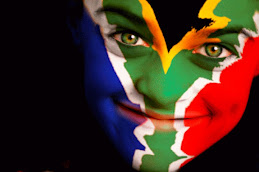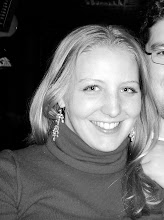I’m embarrassed to admit that I’ve never really liked kids. If I had a choice between child care and almost anything else, I would choose the anything else. Like so many things, I realized that all I needed was a little exposure to change my attitude. I needed to experience in order to understand. I’m beginning to reconsider my disinclination toward children through the exchange of smiles, laughter, games, and piggyback rides. At the crèche where I work there are definitely good days and bad days. There are times when it seems like every other learner is crying, fighting, losing a shoe, or refusing to eat lunch. On days like those it’s difficult to believe that I have so much to learn from them; that they have a simple, uncomplicated wisdom from which most adults can and should learn.
A common saying is that kids won’t care what you have to say until they know you care. In every conversation, in every human interaction, there are two levels of communication: what is being said and everything else. “Everything else” is nonverbal–body language, emotional state, preconceived notions, prejudices, etc. It’s almost a separation between the head and the heart, the words and what they mean. A person will never listen sincerely to what one says unless that person first communicates approval on some basic level, or on a more profound level, expresses love. I think children are much more in tune with this sort of nonverbal communication than adults. It’s so easy to show love and be loved by the kids at the crèche. We speak very little of the same verbal language. My isiZulu is about as good, if not worse, than their English. Communication happens often on the nonverbal level–a smile, a hand to hold, even sitting quietly together. As adults there are so many simple joys that we take completely for granted, because we have lost this child-like ability to show love.
The adults I find most difficult to love here in South Africa, and in the US as well, are often the people from which I have the most to learn. When we become adults and “put off our childish ways,” we become selective in whom we love. While children will love practically anyone who shows them affection, adults love those people who are easiest to love, the people with which they have the most in common, who reinforce their prejudices and biases. We learn nothing about love through those people who are easy to love and love us return. What if I treated the adults in my life with which I often struggle in a more “child-like” way?
I didn’t realize that even when I think there is a disconnect between what I’m thinking and what I’m saying, nonverbal communication is just as, if not more, powerful than what’s actually coming out of my mouth. Even if I think I’m acting professionally, a person has no interest in what I’m saying if, however unintentionally, I’m conveying judgment or disapproval. Instead of subtly, or perhaps not so subtly, communicating condemnation, I need to examine my feelings towards these difficult people. How can I learn to love those people with whom I struggle the way that God loves them, as His children? How can I learn not to be so selective in whom I love, and only return the love of those who have shown me love first? God is passionately seeking to be in relationship with every single one of us, not just those people we like. This child-like love is radical in that, though as humans we are unable to do so, it shows no partiality.
I’m beginning to understand why Jesus said that we must become like children to enter the kingdom of God. I used to think this idea was completely ridiculous. What could children, or any “non-productive” part of society, possibly have to teach adults about God’s kingdom? Having already attained some sort of “maturity,” what do adults have to learn from the whimsical, unhindered ways of children? As an adult I like to think that I’ve put off my childish ways, that I’ve done a lot of growing up—but I realize now how much growing up I have left to do.
A common saying is that kids won’t care what you have to say until they know you care. In every conversation, in every human interaction, there are two levels of communication: what is being said and everything else. “Everything else” is nonverbal–body language, emotional state, preconceived notions, prejudices, etc. It’s almost a separation between the head and the heart, the words and what they mean. A person will never listen sincerely to what one says unless that person first communicates approval on some basic level, or on a more profound level, expresses love. I think children are much more in tune with this sort of nonverbal communication than adults. It’s so easy to show love and be loved by the kids at the crèche. We speak very little of the same verbal language. My isiZulu is about as good, if not worse, than their English. Communication happens often on the nonverbal level–a smile, a hand to hold, even sitting quietly together. As adults there are so many simple joys that we take completely for granted, because we have lost this child-like ability to show love.
The adults I find most difficult to love here in South Africa, and in the US as well, are often the people from which I have the most to learn. When we become adults and “put off our childish ways,” we become selective in whom we love. While children will love practically anyone who shows them affection, adults love those people who are easiest to love, the people with which they have the most in common, who reinforce their prejudices and biases. We learn nothing about love through those people who are easy to love and love us return. What if I treated the adults in my life with which I often struggle in a more “child-like” way?
I didn’t realize that even when I think there is a disconnect between what I’m thinking and what I’m saying, nonverbal communication is just as, if not more, powerful than what’s actually coming out of my mouth. Even if I think I’m acting professionally, a person has no interest in what I’m saying if, however unintentionally, I’m conveying judgment or disapproval. Instead of subtly, or perhaps not so subtly, communicating condemnation, I need to examine my feelings towards these difficult people. How can I learn to love those people with whom I struggle the way that God loves them, as His children? How can I learn not to be so selective in whom I love, and only return the love of those who have shown me love first? God is passionately seeking to be in relationship with every single one of us, not just those people we like. This child-like love is radical in that, though as humans we are unable to do so, it shows no partiality.
I’m beginning to understand why Jesus said that we must become like children to enter the kingdom of God. I used to think this idea was completely ridiculous. What could children, or any “non-productive” part of society, possibly have to teach adults about God’s kingdom? Having already attained some sort of “maturity,” what do adults have to learn from the whimsical, unhindered ways of children? As an adult I like to think that I’ve put off my childish ways, that I’ve done a lot of growing up—but I realize now how much growing up I have left to do.




